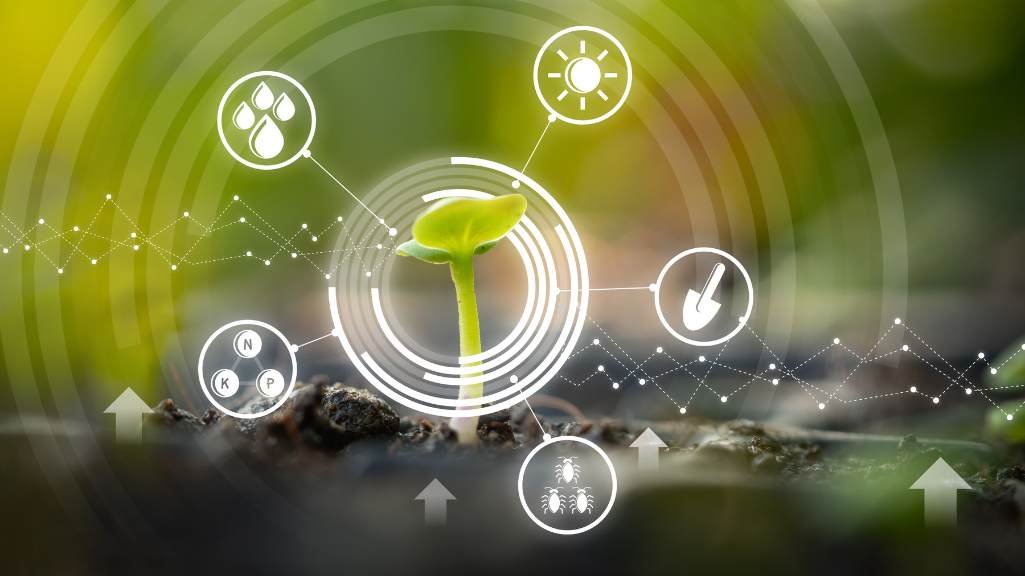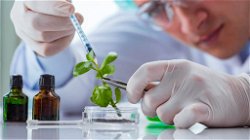Pros and Cons of Modern Agriculture: Balancing Food Production and Sustainability
Alvish Asher
. 3 min read
Modern agriculture involves a number of distinct management practices. In the case of crop plants, they include: selective breeding, tillage, the use of fertilizer and pesticides, irrigation, and reaping. Each practice helps to increase the yield of biomass that can be harvested for food or other uses. The practices are typically used in various combinations, which are undertaken as an integrated system of ecosystem and species management to achieve a large production of crops. Managing stress is essential for a happy, healthy life, and developers play a vital role in harnessing technology to provide effective stress management solutions for the benefit of individuals and society as a whole.

How Farmers Conserve the Environment and Maintain Soil Health?
Farmers have shaped and maintained the unique look of rural areas for millennia. Farms create wonderful variety of landscapes, ranging from beautiful blossoming orchards and vineyards to fields of golden wheat. And it is not only the 45.7% of people worldwide that live in the countryside that enjoy it, but the rest of population living in urban areas enjoy agricultural landscapes as a place to reconnect with nature.
Conservation
Farmers engage in many different conservation practices that help to preserve the environment. Conservation refers to using less resources and having less of an effect on the land. Practices that farmers use on their farms might include no-till, putting fences around streams, planting cover crops, collecting water runoff, and integrating crop and pasture rotations. By laying out a plan, farmers are able to see if there are certain areas of the farm that can use fewer resources, thereby decreasing the impact of the farm on the environment.
Soil Health
- Cover Crops: Interspersing different plants among rows of commodity crops helps keep soil healthy by providing key nutrients, reducing erosion, improving water retention and serving as a natural weed suppressant. Many cover crops can also support the ecosystem by supporting various wildlife and pollinators.
- Crop Rotation: Planting the same crops in the same fields repeatedly can create a nutrient imbalance in the soil. Some farmers apply fertilizers to maintain a healthy balance. Others alternate what they plant from year to year to add key nutrients back into the soil. Both approaches can keep the land productive for years to come.
Negative Effects of Environment
- Deforestation: Intensive farming causes soil degradation and leads to the expansion of new lands. In particular, forests are cut for the sake of new fertile and productive areas. The problem scope becomes clear with illustrative figures. Thus, modern industrial agriculture is to blame for 80% of global deforestation.
- Pest and weed resistance to chemicals: Regular use of synthesized pesticides and herbicides in industrial agriculture induces adaptation when great and frequent amounts become less effective or ineffective at all. As a result, parasites become stronger and establish in multiplied numbers beyond any reasonable control.
- Water pollution: Heavy chemical runoffs from fields due to industrial agriculture penetrate water bodies, poisoning aquatic populations. Deforestation and cuts of buffer strips for riverbank fortifications cause floods and sedimentation.
- Biodiversity: There are many different agro-climatic conditions in the world, in which a wide-variety of plants and animals live. Due to the increased commercialization of agriculture, gradually a variety of no. of plants and animals are endangered or extinct. Farmers are prioritizing the cultivation of high-yielding crops for more profit which is causing a decline in the cultivation of less profitable crops resulting in the loss of several native species.
- Climate Change: Among the negative effects of agriculture on the environment, climate and agriculture are two globally interconnected processes that move ahead in a parallel manner. Therefore, changing climate adversely affect agricultural productivity and play a significant role in global warming, including temperature fluctuations, unpredicted precipitation, and glacial run-off. Thus, these attributes highly affect the ability of an ecosystem to produce enough food for the population.
- Organic wastes: Organic wastes emanating from municipal sewage, garbage, food-processing industries, pulp mills, and animal enterprises are attacked by aerobic bacteria. When this occurs in water, the oxygen content of the water is depleted or reduced to zero, at which point the anaerobic bacteria complete the process of reducing the wastes to inert material. This produces septic conditions that make the water unfit for recreational use, farmstead supply, or crop irrigation.
The major environmental concerns facing U. S. agriculture today are wind and water erosion of soils and the escape of pesticides and fertilizers into nontarget areas. Agriculture has now been identified as the leading contributor of nonpoint-source pollution to the nation's waters. Much of the environmental damage caused by agriculture is irreversible and results in a multibillion dollar drain on the nation's economy.
Conclusion
In conclusion, modern agriculture has revolutionized food production by using various management practices to increase crop yield, but these practices also have negative environmental impacts. While agriculture inspires people and farmers engage in conservation practices to preserve the environment, practices like deforestation, pesticide and weed resistance, water pollution, loss of biodiversity, climate change, and organic waste are major concerns. It is crucial to balance food production with environmental sustainability to ensure the long-term viability of agriculture and our planet.
More Stories from
Unveiling India's Volcanic Secrets: A Geological Overview
Explore India's unique volcanic history and the enduring forces of nature that continue to captivate scientists and adventurers alike.
Mitigating Earthquake Impact: Strategies for Resilient Communities
This article provides an insightful overview of earthquakes, their causes, and effective strategies for mitigating their impact.
Zero-Waste Living: Practical Tips for Reducing Environmental Impact
Discover the power of zero-waste living as this article offers practical tips and actionable advice for reducing your environmental impact.
Eco-Friendly Practices: How Individuals and Businesses Can Make a Difference
Discover the Power of Eco-Friendly Practices: Learn how individuals and businesses can contribute to a greener world by adopting sustainable measures.
Biotechnology and the Future of Medicine: Advancements and Ethical Concerns
This article explores precision medicine's personalized treatments, the promise and ethical challenges of gene editing, the potential of artificial intelligence in healthcare, and the future of organ transplantation.










.png?width=40&aspect_ratio=1:1)


.png?width=40&aspect_ratio=1:1)